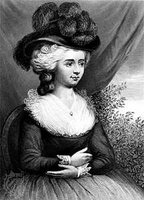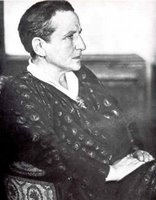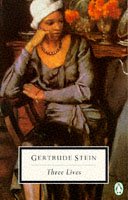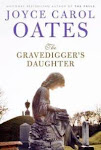

Endurance Through Magic:Conjuring to Cope
Charles Chesnutt's, The Conjure Woman and Other Conjure Tales
Charles W. Chesnutt had a great love of life which is reflected in his writing. Helen Chesnutt wrote, “His gallant humor, his love for people, his keen enjoyment of the little things in life never grew less.”
(Bloom 5) His philosophy for himself and his family was: “We are normal human beings with all the natural desires of normal individuals. We shall live our lives as Americans pure and simple, and whatever experiences we encounter, shall be borne with forbearance, with fortitude, and amusement if possible.”
(Bloom 5) In Chesnutt’s
The Conjure Woman and Other Conjure Tales, he illustrates how the Black slaves endured a life of abuse, tribulation, grief and injustice with forbearance, fortitude, and a magical spirit of hope.
Anthropologist, Bronislaw Malinowski developed a theory of magic and its psychological value. “Where there is uncertainty of practical success of the outcome of uncontrollable events, magical acts reduce the anxieties involved, thus widening the apparent range of an individual’s ability to deal with the environment.”
(Kottak 338) By examining the stories in
The Conjure Woman, we can see how the slaves were so desperate to defeat their cruel and inhuman white owners, they often turned to a conjure woman for assistance with unbearable problems and predicaments. By closely examining these tales, as told by old Uncle Julius, we can see that there is an important, yet unobvious theme of desperation and hope in each of these stories.
What the slaves hated most about slavery wasn’t the hard work to which they were subjected, but their lack of control over their own lives and their lack of freedom. In the story of
Po’ Sandy, Sandy’s woman is swapped for another woman while he was lent out to another plantation. After a month or two he returned to his owner’s plantation to find his wife was gone. He didn’t even get to say goodbye. All slaves knew of the possibility of being separated from loved ones. However, that knowledge did not make it any less heartbreaking when it happened. Yet somehow they persevered and life went on. Julius tells Annie and John that “
Sandy tuk onsome ‘bout losin’ his wife, but he soon seed dey want no use cryin’ ober spilt merlasses, en bein’ es he lacked de looks er de noo ‘oman, he tuk up wid her atter she’d be’n on de plantation a mont’ er so.”
(Chesnutt 46) His attempt at a relationship with another woman was again disrupted by unfeeling slave owners when he is to be sent away again. Tenie, his new woman, resorts to magic to keep her man with her. She decides to use magic to escape the pain of separation. She asks Sandy, “
is I eber tol’ you I wuz a cunjuh ‘oman?”
(Chesnutt 47) After Sandy learns about Tenie’s powers, he wishes to be something permanent like a tree or a stone. Tenie
goophered Sandy and turned him into a tree so they could stay together and not be separated. At the end, it seems her magic has backfired and Sandy is sawed up in a saw mill by his unknowing owners. However, Sandy still lives on as a spirit, haunting the school building which was built from the lumber of his tree. In the minds of these determined people, the white man does not prevail.
“Masters continuously intervened in the lives of their slaves, from directing their labor, to approving or disapproving marriages.”
(Hughes 250) The most heartbreaking aspect of control the slaveowners had was the power to separate children from their mothers. In
Sis’ Becky’s Pickaninny, Becky’s owner is a compulsive gambler and he trades her for a racehorse. She is tricked into thinking she is going away for a couple of days, when in fact she was traded away like a livestock creature, while leaving her baby behind. She longs to see her baby and he fails to thrive without her. Aun’ Nancy, who was caring for the child, took him to Aun’ Peggy, the conjure woman to ask for her help. Aun’ Peggy uses magic to cause something to be wrong with the horse, which in turn will make Becky’s former owner want to call off the deal and demand her return. At the end of the story, the agreement is declared null and the horse went back to its owner and Becky was reunited with her baby Mose. Once again, through their own beliefs, the slaves gained the upper hand over the whites through the use of magical powers.
As stated in the above paragraph, masters were constantly interfering in the lives of their slaves. All too often, this interference included unspeakable cruelty. Many were whipped, tortured mercilessly and even killed, for even the smallest of offenses. “The psychology involved reflects the interaction between personality and environment resulting in a neurosis based on fear.”
(Hughes 46) This fear of physical harm forced many slaves into paranoid behavior and a delusional belief in magical powers in an attempt to protect or deliver themselves from their hostile situations.
Mars Jeem’s Nightmare is an illustration of the wish of the slaves for the white slaveowners to experience the pain and suffering they inflict upon the black people whom they own. Mars Jeems was a very cruel master. Uncle Julius gives us an example of his meanness as he says, “
His niggers wuz bleedzd ter slabe fum daylight ter da’k.”
(Chesnutt 58) Mars Jeems did not allow any singing ,dancing or any other things humans do for enjoyment to counter the long hours of work. He allowed no relationships to form and when people crossed him he administered severe physical punishment. Julius goes on the explain that, “
Ef any er de niggers eber complained, dey got fo’ty; so co’se dey didn’ many un ‘em complain.”
(Chesnutt 58) Solomon turns to Aun’ Peggy, the conjure woman for assistance. Aun’ Peggy made a potion and told Solomon to have the cook put it in the soup for Mars Jeems to ingest. The concoction gave him a terrible nightmare. He dreamed that he was a slave and experienced the cruelty that he had inflicted on his black captives. He returned to his plantation a changed man. This is yet another example of how the slaves got the upper hand with the use of conjuring.
When people find themselves in dire straits, many call to a supernatural power to rescue or release them from their miseries. The black slaves called upon a power that was instinctive to them, reminiscent of another time and another place in the history of their culture. Their belief system was a combination of a forced white man’s religion combined with past cultural beliefs to form a very unique way to cope with the oppression and anguish they experienced on a daily basis. We can learn from these stories of how these remarkable human beings endured the horrors of slavery with forbearance and fortitude while retaining a sense of their own unique culture and, amazingly, their sense of humor.
Works CitedBloom, Harold. Major Black American Writers: Through the Harlem Renaissance New York: Chelsea House Publishers, 1995.Chesnutt, Charles W. The Conjure Woman and Other Conjure Tales. Duke University Press, 1998.Hughes, Carl Milton. The Negro Novelist: A Discussion of the Writings of American Negro Novelists. New York: Citadel Press, 1953.Kottak, Conrad. Anthropology: The Exploration of Human Diversity - Seventh Edition. New York: McGraw-Hill, 1997.Starke, Catherine J. Black Portraiture in American Fiction. New York: Basic Books, Inc., 1971.
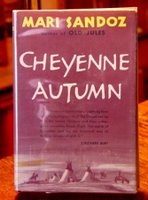
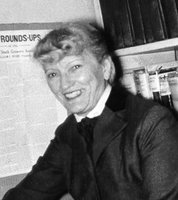 Mari Sandoz
Mari Sandoz











